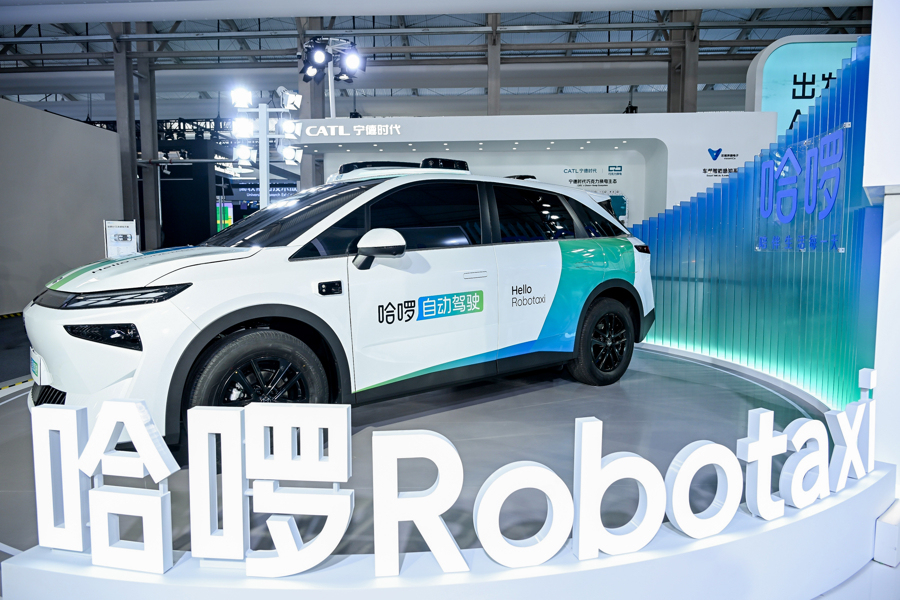As global autonomous driving technology enters the eve of commercialization, how can we achieve the large-scale implementation of Robotaxi (driverless taxi) scenarios?
On September 11th, at the 2025 Bund Conference Insights Forum hosted by Hello, industry, academia, and research experts discussed the prospects for the implementation of Robotaxi. Cheng Shidong, Director of the Urban Transportation Center at the National Development and Reform Commission's Institute of Comprehensive Transportation, stated in his keynote speech: "The development of artificial intelligence is the engine of a new generation of technological revolution. I believe that autonomous driving is the area of artificial intelligence that is most likely to be rapidly adopted and applied, generating significant commercial value."
Cheng Shidong stated that every country is now scrambling to research AI (artificial intelligence), "because whoever occupies the commanding heights of AI will also occupy the commanding heights of future industrial and economic development." Similarly, whoever masters autonomous driving technology will also control the entire future automotive industry.
From an industry perspective, Horizon Robotics President Chen Liming shared the company's practices and reflections over the past decade as it transitions from Level 2 (assisted driving) to Level 4 (fully autonomous driving). Chen Liming stated that addressing the current issue of "low performance ceiling" in autonomous driving requires addressing four key areas: algorithms, computing power, data, and engineering capabilities.
Chen Liming believes that in terms of Robotaxi technology paradigms, the fusion perception model exemplified by Google Waymo and the pure vision model exemplified by Tesla can be considered "two routes to climb Mount Everest." Horizon Robotics observes that some companies' current definition of Level 3 faces a dilemma: the hardware, software, and system redundancy required by Level 3 inevitably drives up overall system costs, leading to high costs; on the other hand, the user experience is limited by numerous usage scenarios.
Chen Liming emphasized that L3 should be a combination of "L4 intelligent driving products with limited but clear ODD (design operating range) boundaries" and "L2 full-scenario assisted driving." Solid L2 foundational capabilities are the "inevitable path" to achieving L4. "We believe that 2025 will be a turning point for L2 urban assisted driving, which will see significant growth. By 2028, L3 'hands-off driving' should be achievable; 'eyes-off driving' by 2030; and 'minds-off driving' by 2035."
On the technical level, Wei Ping, Vice Dean of the School of Artificial Intelligence at Xi'an Jiaotong University, pointed out that currently, most autonomous driving companies still use a "multi-sensor fusion plus high-precision map" approach, but he does not rule out the possibility of change in the future: "In the future, due to cost considerations, the demand for high-precision maps may gradually decrease. At the same time, in order for autonomous driving systems to better handle unexpected situations, the fundamental goal is to enable the systems to have the ability to continuously evolve and learn, just like humans."
Liu Xingwei, Vice President of Robotics and Perception at Hesai Technology, said there was a time when many automakers questioned whether they even needed lidar. However, lidar prices have continued to fall, and its ability to significantly improve safety has been proven. "In terms of Level 2, we've seen a significant trend: many automakers have made lidar standard equipment starting this year, covering their high-end, mid-range, and low-end vehicles. Level 4, on the other hand, has always relied on multi-sensor fusion."
In recent years, travel platforms have been scrambling to establish themselves in the autonomous taxi market. In June of this year, Hello officially announced its entry into the Robotaxi market. On the 11th, Hello's first self-developed Robotaxi vehicle, the "HR1" (Hello Robot1), was officially unveiled at the Bund Conference. Built on the Dongfeng Venucia VX6 redundant chassis platform, it utilizes Hello's proprietary fully vehicle-grade hardware and software architecture. Equipped with eight lidar sensors, 14 high-resolution cameras, six millimeter-wave radars, and 12 ultrasonic radars for environmental perception, the vehicle is scheduled for mass production in 2026.

Hello HR1 achieves all-round breakthroughs in safety design
At the forum, Hello signed strategic agreements with Dongfeng's Venucia Auto, Alibaba Cloud, Horizon Robotics, and Hesai Technology to jointly advance the commercialization of Robotaxi. Yu Qiankun, co-founder of Hello Autonomous Driving, stated that Hello Robotaxi utilizes a strategy that integrates big data, massive computing power, and advanced models. On the vehicle side, the plan is to utilize a diffusion model as the foundation, incorporating expert knowledge and experience to build a real-time, end-to-end autonomous driving model with strong interactive capabilities and multi-modal driving behavior.
Looking ahead, Hello Robotaxi plans to launch a Robotaxi model each year this year and next year. It has already started commercial pilot operations in Zhuzhou, Hunan. It plans to expand commercial operations to 10+ cities in China next year and to launch it in the first international city. It aims to deploy more than 50,000 Robotaxi models by 2027.

